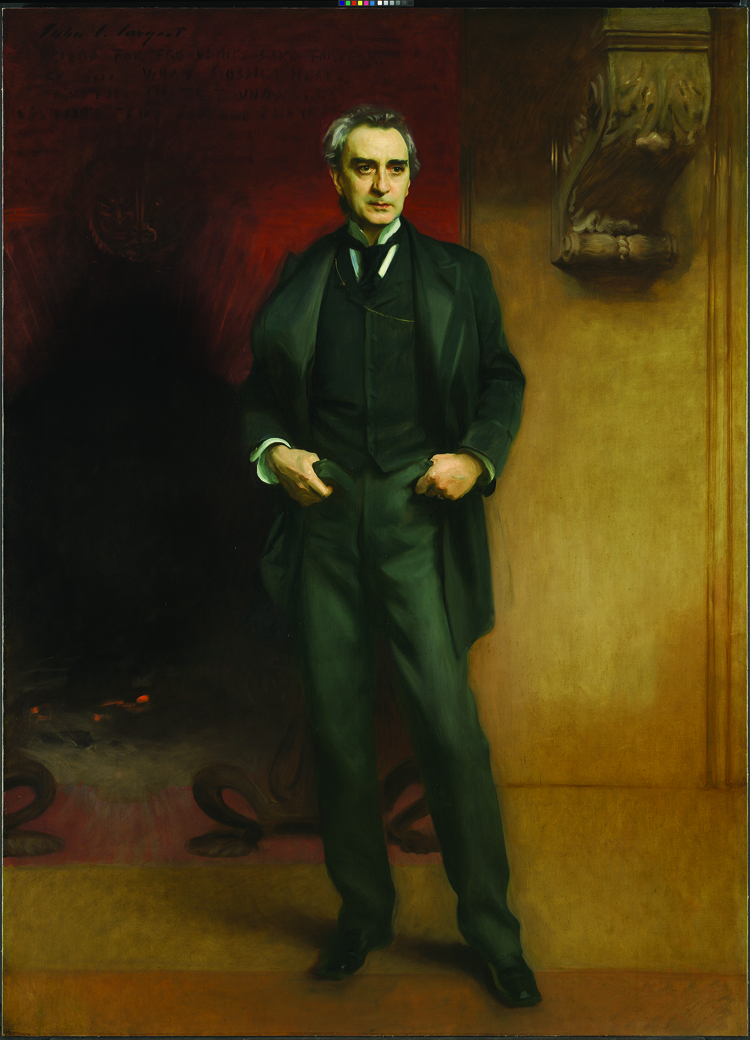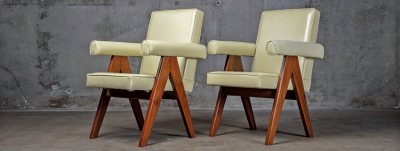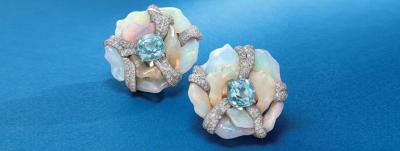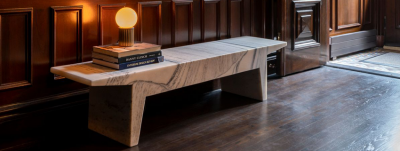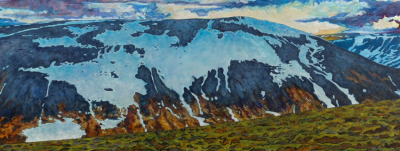Museum Acquisitions: Top Picks of 2013
We take the opportunity to once again recognize and celebrate a year of museum acquisitions. Items we have selected are by iconic artists and artisans or relay histories that make them important examples of their type. For acquisitions, 2013 was a very good year—in generosity of donors and the ability of museums to purchase material relevant to their missions. While we cannot include every museum or acquisition, we hope you will enjoy our choices. We begin with what many consider the heart of the art world, New York City.
Last spring, former Estee Lauder CEO Leonard Lauder pledged to donate to The Metropolitan Museum of Art his collection of seventy-eight Cubist paintings by Pablo Picasso (1881–1973), Georges Braque (1882–1963), Juan Gris (1887–1927), and Fernand Léger (1881–1955). Among the works are Picasso’s 1913 “Woman in an Armchair (Eva)” and the 1914 “Absinthe Glass”; Leger’s 1914 “The Village” and the 1914 “The Smoker” (Fig. 1); Braque’s 1914 “Bottle of Rum”; and Gris’ 1912 “Portrait of the Artist’s Mother.” Forbes valued the collection at $1.1 billion.
The Met continued its acquisitions efforts, purchasing at Christie’s a four-hundred-year-old oil painting by Charles LeBrun (1619–1690) (The Sacrifice of Polyxena) for $1,885,194, which had been hanging unnoticed in the Coco Chanel suite at the Hotel Ritz in Paris. They also bought an ink and gray wash painting (Death of Socrates) by Jacques-Louis David (1748–1825) at Swann Galleries in January. Believing it to be a copy of a painting currently in the Met, the auction house listed the work as “French school, early 19th century.” The Met’s curators recognized the hand of David and picked up the original neoclassical work for $840. The Met also acquired Tibetan and Nepalese works cited as “among the rarest and most important such objects to enter a Western collection.”
New York’s Museum of Modern Art also did well, acquiring several sculptural pieces by Lynda Benglis (b. 1941) as gifts (donated by the Fuhrman Family Foundation, Agnes Gund, and the artist): the 1969 Blatt, the 2007 Double Fountain (Mother and Child), and the 1975 Modern Art Pair. Museum trustee Glenn Dubin and his wife, Eva, donated Overdrive, a 1963 combine painting by Robert Rauschenberg (1925–2008). Hedge-fund billionaire and art collector Steven A. Cohen also donated several works to the Modern’s permanent collection, including an untitled 1981 painting by German artist Martin Kippenberger (1953–1997) from his Dear Painter, Paint for Me series, Rancho (1968) by Ed Ruscha (b. 1937), and an untitled 1955 sculpture by Cy Twombly (1928–2011). The Modern bought Gerhard Richter’s (b. 1932) 1963 painting Tote (Dead) from New York’s Gagosian Gallery for an undisclosed amount (Fig. 2). The painting was last sold publicly ten years ago at Sotheby’s London for $5.6 million.
Elsewhere in Manhattan, the Cooper-Hewitt National Design Museum received cash donations from collections committee member George R. Kravis II, museum trustee Judy Francis Zankel, and an anonymous donor, to purchase an early (1936) example of bentwood furniture by Marcel Breuer (1902–1981) (Fig. 3). Kravis also gifted Alexander Girard’s (1907–1995) 1968 armchair designed for Braniff International Airways. The New-York Historical Society acquired a monumental Tiffany & Co. presentation bowl and decorative ironwork by Samuel Yellin (1885–1940).
More than one hundred pieces of what is considered “probably the most important collection “ of New York State documented furniture, decorative, and fine art, dating primarily to between 1700 and 1900, were deeded to the New York State Museum in Albany by the late Eric Martin Wunsch via the Wunsch Americana Foundation. The museum also acquired a rare circa-1890 stoneware acrobat jug (Fig. 4), by the Fulper Brothers of Flemington, New Jersey. Offered by Allan Katz Americana at the Winter Antiques Show for $295,000, it was purchased and donated to the museum by Adam Weitsman. The Munson-Williams-Proctor Arts Institute acquired a circa–1895 carved chair designed by Lockwood de Forest (1850–1932), and a corner cabinet made circa 1898–1899 by Charles Rohlfs (1853–1936) for his Arts and Crafts home in Buffalo, New York.
California
The forty-three-member Art Collectors’ Council of the Huntington Library, Art Collections, and Botanical Gardens chipped in approximately $1 million to purchase Reginald Marsh’s (1898–1954) 1935 The Locomotive and George Luks’ (1867–1933) circa-1925 The Breaker Boys for the institution.
The Los Angeles County Museum of Art collectors’ committee raised $3.2 million to purchase nine objects for the permanent collection, including a full-scale plaster and earth model of James Turrell’s (b. 1943) ongoing project Roden Crater (1985–1987), and Thomas Demand’s (b. 1964) 2011 photographed scale model of the Daiichi power plant in Fukushima (Control Room). Additionally, JP Morgan donated a 1955 photograph from Robert Frank’s (b. 1924) The Americans series, and Stains (1969), a portfolio of seventy-five works on paper by Ed Ruscha.
Meanwhile, the San Diego Museum of Art purchased a circa-1665 polychromed wood sculpture (San Diego de Alcalá) by Spanish Baroque artist Pedro de Mena (1628–1688) with funds donated by the estate of Donald W. Shira. Painter Wayne Thiebaud (b. 1920) donated his 2002 Jolly Cones and a group of six prints dating from 1964 to 2012 to the Laguna Art Museum.
The J. Paul Getty Museum in Los Angeles purchased an early Rembrandt (1606–1669) Self-Portrait (Rembrandt Laughing, circa 1628) (Fig. 5), which Getty director Timothy Potts describes as “unquestionably one of the most remarkable works of art to become available in recent memory,” and the circa-1738 The Grand Canal in Venice from Palazzo Flangini to Campo San Marcuola by Canaletto (1697–1768). Additionally, the Getty Research Institute bought a set of late-eighteenth-century Chinese battle prints, which show a successful military campaign against invading Nepalese armies.

- Fig.6: Thomas Hart Benton (1889–1975), Cotton Pickers, 1945. Oil on canvas. Courtesy The Art Institute of Chicago. Prior bequest of Alexander Stewart; Centennial Major Acquisitions Income and Wesley M. Dixon Jr. funds; Roger and J. Peter McCormick Endowments; prior acquisition of the George F. Harding Collection and Cyrus H. McCormick Fund; Quinn E. Delaney, American Art Sales Proceeds, Alyce and Edwin DeCosta and Walter E. Heller Foundation, and Goodman funds; prior bequest of Arthur Rubloff; Estate of Walter Aitken; Ada Turnbull Hertle and Mary and Leigh Block Endowment funds; prior acquisition of Mr. and Mrs. Frank G. Logan Purchase Prize; Marian and Samuel Klasstorner and Laura T. Magnuson Acquisition funds; prior acquisition of Friends of American Art Collection; Wirt D. Walker Trust; Jay W. McGreevy Endowment; Cyrus Hall McCormick Fund; Samuel A. Marx Purchase Fund for Major Acquisitions; Maurice D. Galleher Endowment; Alfred and May Tiefenbronner Memorial, Dr. Julian Archie, Gladys N. Anderson, and Simeon B. Williams funds; Capital Campaign General Acquisitions Endowment, and Benjamin Argile Memorial Fund.

- Fig. 7: Georgia O’Keeffe (1887–1986), My Back Yard, 1943. Oil on canvas, 18 x 24 in. Courtesy, Cincinnati Art Muesum. Museum Purchase: The Edwin and Virginia Irwin Memorial, Fanny Bryce Lehmer Endowment, Bequest of Mr. and Mrs. Walter J. Wichgar, John J. Emery Endowment, Mr. and Mrs. Harry S. Leyman Endowment, and Rieveschl Collection Fund (2013.51). © The Georgia O’Keeffe Foundation/Artist Rights Society (ARS), New York.
Midwest
The Indianapolis Museum of Art received a gift of William-Adolphe Bouguereau’s (1825–1905) 1901 oil painting Dream of Spring from long-time museum benefactors Melvin and Bren Simon, and the Art Institute of Chicago purchased for an undisclosed amount Thomas Hart Benton’s (1889–1975) 1945 Cotton Pickers (Fig. 6). The Art Institute also received almost a thousand works of fine and decorative European and East Asian art from collector Dorothy Braude Edinburg, which included eight hundred works on paper by such artists as John Constable, Edgar Degas, Claude Monet, Juan Gris, Vasily Kandinsky, Edvard Munch, Henri Matisse, and Pablo Picasso. The Asian objects include stoneware, porcelain, and printed books from China, Japan, and Korea.
California businessman Willard Clark and his wife Elizabeth, in concert with the Clark Center for Japanese Art and Culture in Hanford, California, donated almost 1,700 fine and decorative works of Japanese art (paintings, sculpture, woodblock prints, ceramics, bamboo baskets, and textiles) to the Minneapolis Institute of Art. The value of the gift is estimated at more than $25 million.
The Cleveland Museum of Art purchased privately the 1949 Perseus’ Last Day by German Expressionist Max Beckmann (1884–1950), and acquired at a Christie’s auction (paying $478,346) an 1811 enamel-on-copper copy of Titian’s (ca. 1487–1577) Bacchus and Ariadne by Henry Bone. As gifts from Mark Schwartz and Bettina Katz, the museum received a set of ninety-two photographs (Social Graces) taken in the 1970s and 1980s by Larry Fink (b. 1941) that portray the wealthy in Manhattan and the poor in rural Pennsylvania. A twelfth-century Chinese ceramic bowl from the Song Dynasty was a gift of Donna and James Reid.
The Cincinnati Art Museum acquired its first work by Georgia O’Keeffe (1887–1986), My Back Yard (1943), (Fig. 7), painted within a few years of her purchase of land at Ghost Ranch in New Mexico. Acquired at a Christie’s American art sale in May, and paying $1,803,750 (estimate $1–$1.5 million), the work fulfills a museum goal of owning an O’Keeffe, which took nearly two decades to achieve. The Nelson-Atkins Museum of Art in Kansas City, Missouri, installed a commissioned sculpture by Maya Lin (b. 1959), Silver Missouri (its shape mirroring the twisting route of the river), and acquired a metal weathervane silhouette of polo players by William Hunt Diederich (1884–1953). The Detroit Institute of Art, which continues to acquire works though the city manager spoke of selling its art to raise money for the beleaguered city, bought a Murano glass sculpture by Fred Wilson (b. 1954), To Die Upon a Kiss, that will be hung from the ceiling of one of the museum’s contemporary galleries.

- Fig. 11: Sheldon Peck (1797–1869), John Aylsworth, ca. 1835.
Oil on canvas. Courtesy Yale University Art Gallery;
gift of the sitter’s great-great-grandchildren Elizabeth Ann Kennedy Work and William Aylsworth Kennedy, M.R.E., 1960, in memory of John Aylsworth’s son, grandson, great-granddaughter and their spouses, and purchased with the Friends of American Arts Acquisition Fund.
New England
The Currier Museum of Art in Manchester, New Hampshire, added three purchases to its collection of contemporary art, the 1968 Singerli, Variation I (Fig. 8), by Frank Stella (b. 1936) (part of his Protractor series), the 1971 Decade Autoportrait, 1963 by Robert Indiana (b. 1928), and the 2005 painted banner Rotunda Unwound by Sam Gilliam (b. 1933). The museum also acquired a 1902–1903 reclining armchair designed by Frank Lloyd Wright (1869–1959).
The Museum of Fine Arts Boston expanded its collections with a gift of 161 works of American contemporary craft from long-time benefactor Daphne Farago, the largest single donation of contemporary craft objects, which includes pieces by glass artist Dale Chihuly (b. 1941), fiber artist Anni Albers (1899–1994), sculptor Robert Arneson (1930–1992), and furniture maker John Cederquist (b. 1946). In August, the MFA purchased a rare William and Mary escritoire (Fig. 9), circa 1700–1720, from Skinner Auctions for $270,000. One of only three or four American examples known, it has an amazing level of complexity, with fifty compartments and twenty-four secret drawers. Additionally, the museum received a collection of thirty-four West African works of art, dating from the fifteenth to the nineteenth centuries, from Robert Owen Lehman.
Japanese art collectors Robert and Betsy Feinberg made a promised gift of almost three hundred painted fans, screens, and hanging scrolls from the Edo and Meiji periods (1615–1912), to the Harvard Art Museums, and Old Masters collector Hester Diamond donated a circa–1560 painting by Veronese (1528–1588) (Disarming Cupid) to the Worcester Art Museum. New York collectors Frank and Katherine Martucci donated to the Sterling and Francine Clark Art Institute in Williamstown, Massachusetts, sixteen major works, including eight paintings by nineteenth-century American landscape artist George Inness (1825–1894) (among them, the 1891 New Jersey Landscape and the circa-1894 Autumn in Montclair), as well as a circa–1905 watercolor landscape by Piet Mondrian (1872–1944), Farmstead along the Water Screened by Nine Tall Trees, and an 1874 oil, A Prisoner of the State, by Eastman Johnson (1824–1906). The Portland Museum of Art in Portland, Maine, also acquired a work by Johnson, The Quiet Hour, circa 1877.
The Wadsworth Atheneum in Hartford, Connecticut, acquired a rare, circa-1870, fall-front desk (Fig. 10). Acquired from dealers Ricco-Maresca at the Metro Show in January, the desk was made and carved by an emancipated slave by the name of William Howard. Yale University Art Gallery also acquired an important example of American folk art: artist Sheldon Peck’s (1797–1868) portrait of John Aylsworth (Fig. 11), circa 1835, which descended directly in the family.
Mid-Atlantic
The Philadelphia Museum of Art purchased an untitled glazed stoneware work (1956) by Peter Voulkos (1924–2002), and received a walnut bureau by studio furniture maker Richard Kagan (b. 1945), commissioned in 1981 by Mrs. Robert L. McNeil, and recently gifted by her to the museum.
The National Gallery of Art added its first work by French painter Jean-Leon Gerome (1824–1904), View of Medinet El-Fayoum (circa–1868 to1870), and a 1927 black-and-white photograph by Edward Weston (1886–1958), Shell 1, in addition to a portfolio (All Thumbs, 1992) of ten photogravures by Al Taylor (1948–1999), a circa-1974–1975 untitled painting by Al Loving (1935–2005), Jasper Johns’ (b. 1930) 1997 print Green Angel 2, along with thirteen related proofs and six copperplates used in its printing, and two sculptural pieces by Robert Smithson (1938–1973), A Nonsite, Pine Barrens, New Jersey (1968) and Glass Stratum (1967). In 2015, visitors to the Smithsonian American Art Museum will be able to see the exhibition of the one hundred photographs by Irving Penn (1917– 2009) that were acquired in 2013 from the Irving Penn Foundation.
The Virginia Museum of Fine Arts in Richmond was the recipient of a 1990 enamel-on-aluminum painting, Barn Behind Beechwoods, by Tom Wesselmann (1931– 2004), (a gift from his widow), but some of its most important acquisitions were purchases using income from endowment funds, including a circa-1824–1825 John Constable (1776–1837) double-sided drawing on paper: A Horse and Cart on one side and a study for The Gleaners, Brighton on the verso (made possible by the Aldine S. Hartman Endowment Fund). Among the acquisitions for Colonial Williamsburg in Virginia, was a circa-1838–1839 portrait Francina Elizabeth Cox Greer and her Daughter, Elizabeth Mentoria, by an unidentified artist from Georgia, and a corner cupboard from Hawkins County, Tennessee, with vibrantly figured black walnut.
The Southeast
A 1937 study for Thomas Benton’s Spring on the Missouri is now in the North Carolina Museum of Art in Raleigh, which also owns the final painting (1945) of the same subject. Benton sent the study as a gift to the original purchaser of the painting, comedian Harpo Marx. The Museum of Early Southern Decorative Arts in Winston-Salem, North Carolina, purchased a number of important regional works, including two folk art portraits by the Guilford Limner and a chest-on-chest from the Shenandoah Valley.
Looking to augment its works by women artists, the High Museum of Art in Atlanta purchased a 2013 installation by Sarah Sze (b. 1969), Book of Parts (Centennial), and a 2003 print (Day) by the same artist, as well as Mogamma (A Painting in Four Parts) (Part II), a 2013 work by Julie Mehretu (b. 1970).
In West Palm Beach, Florida, the Norton Museum of Art acquired contemporary works by Jenny Saville (b. 1970) and Lynda Benglis (b. 1941); photographer Edward Weston’s iconic Shell and Rock Arrangement of 1931; an oil-on-paper by Thomas Hart Benton; and several works donated by trustee John Richman and his wife, Priscilla, including Sunset, Giverny Church by American impressionist Theodore Earl Butler (1861–1936). The Norton was also delighted to receive a masterpiece by French artist Claude-Joseph Vernet (1714–1789). The Fishermen of 1746 (Fig. 12), one of only two works in a series of eight to survive, was discovered during a condo cleanout. In Miami, the Perez Art Museum received a donation of approximately three hundred works of contemporary art from Debra and Dennis Scholl, including pieces by Vito Acconci (b. 1940), John Baldessari (b. 1931), Walead Beshty (b. 1976), Ólafur Elíasson (b. 1967), Liam Gillick (b. 1964), Catherine Opie (b. 1961), and Raymond Pettibon (b. 1957), among others. Not to be outdone, long-time Perez Museum supporters Mimi and Bud Floback made a gift of ten works of contemporary art, including paintings, photographs, and sculpture by artists such as Rineke Dijkstra (b. 1959), Dan Flavin (1933–1996), Jim Hodges (b. 1957), Susan Rothenberg (b. 1945) and Andres Serrano (b. 1950), making a total of thirty pieces that the Flobacks have donated to the museum.

- Fig. 15: Tea urn, Eliel Saarinen (1873–1950), Wilcox Silver Plate Company, division of International Silver Company; designed ca. 1932–1933. Silverplate. Courtesy Dallas Museum of Art, The Patsy Lacy Griffith Collection; gift of Patsy Lacy Griffith by exchange, General Acquisitions Fund, and gift of Susan and Eric Saarinen.
The Southwest
The Crystal Bridges Museum of American Art in Bentonville, Arkansas, continues to seek out and acquire iconic works by major artists, picking up in the past year a full-length portrait of Alexander Hamilton (1792) by John Trumbull (1756– 1843) (owned in part by the Met); an untitled 1989 copper and Plexiglas sculpture by Donald Judd (1928–1994); Keith Haring’s (1958–1990) sculpture of a “Two Headed Figure,” 1986; and a 1909 Cubist oil painting (Burlesque #2), by Max Weber (1881– 1961). In May, the museum also acquired Edward Hopper’s (1882–1967) Blackwell’s Island, purchased at Christie’s for $19.2 million by a private patron and donated to the museum. This year the museum also added a number of works by Andy Warhol (1928–1987), among them his 1977 Hammer and Sickle silkscreen on canvas and the recently acquired Coca-Cola (Fig. 13) of 1962. An icon of his early Pop Art period, Coca-Cola was purchased from Christie’s for $57.3 million.
The Amon Carter Museum of American Art in Fort Worth, Texas, purchased Robert Seldon Duncanson’s (1821–1872) 1869 The Caves, which had been in a private family collection for close to 150 years, as well as a full-length 1890 portrait of the nineteenth-century Shakespearean actor Edwin Booth (Fig. 14) by John Singer Sargent (1856–1925), which museum director Andrew J. Walker refers to as “among [Sargent’s] most brilliantly conceived full-length male portraits.”
Among the new arrivals at the Dallas Museum of Art are a circa-1800 oil, Portrait of an Artist in His Studio, by an unknown painter (gift of Michael L. Rosenberg Foundation); Eminia and the Shepherds (1795) by French artist Guillaume Guillon Lethière (1760–1832), (Dallas Museum of Art Foundation for the Arts and Mrs. John B. O’Hara Fund); a 1988 Miss Blanche armchair made of acrylic and aluminum, designed by Japanese designer Shiro Kuramata (1934–1991) (bought with a variety of funds and museum patron donations); and an Eliel Saarinen (1873–1950) circa-1932–1933 architectonic tea urn (purchased with money contributed by a number of funds and patrons), (Fig 15). Additionally, the museum acquired jointly with the Museum of Fine Arts, Houston, a 35mm film, Black Drop (2012), by British artist Simon Starling (b. 1967). The MFAH also purchased a classical chair, circa 1816, by Duncan Phyfe (1770–1854) of New York, and the photography-based book collection of California designer Manfred Heiting, which consists of 25,000 photography books and ephemera created in dozens of countries from the mid-nineteenth century through the late twentieth century.
Daniel Grant is a freelance writer specializing in the art industry.
























![Fig. 13: Andy Warhol (1928–1987), Coca-Cola [3], 1962. Casein on canvas. Courtesy Crystal Bridges Museum of American Art, Bentonville, Arkansas.](../sites/uploads/0134.jpg)
